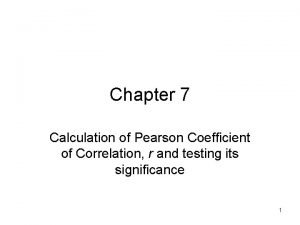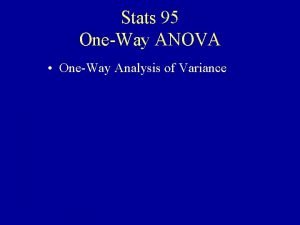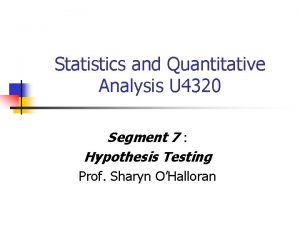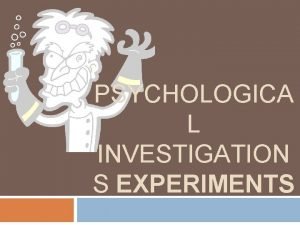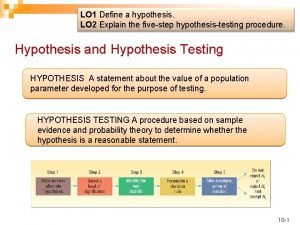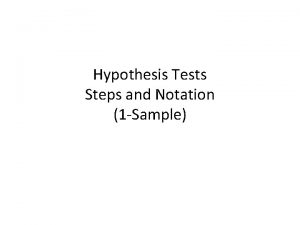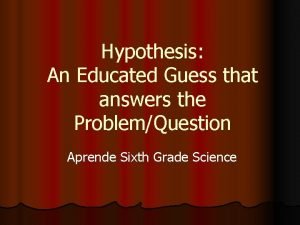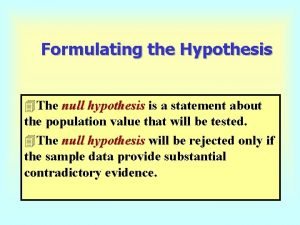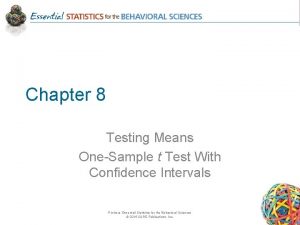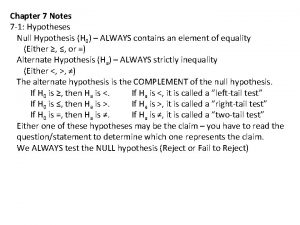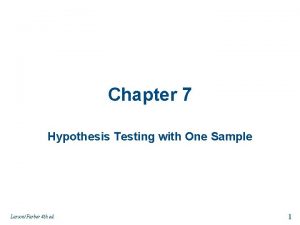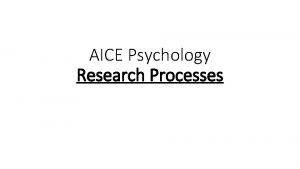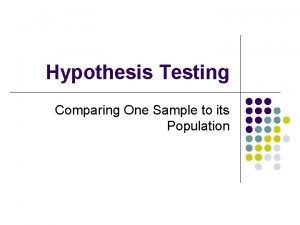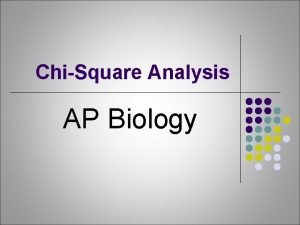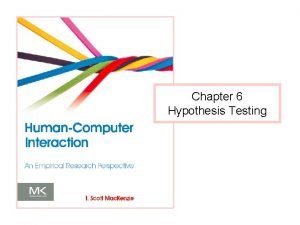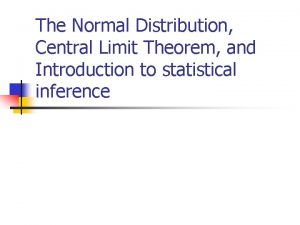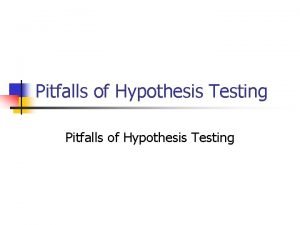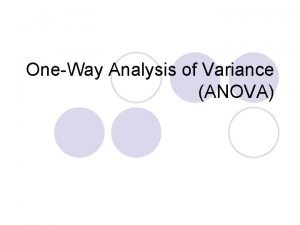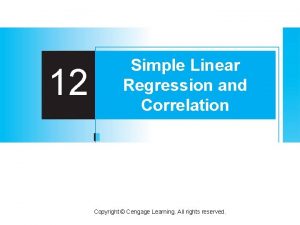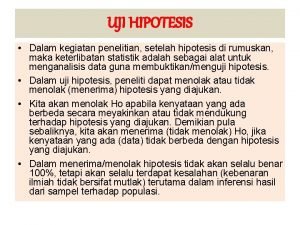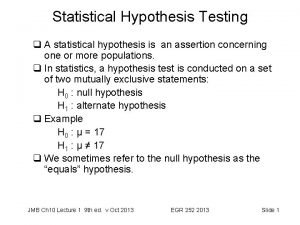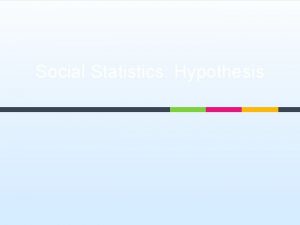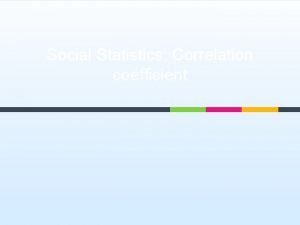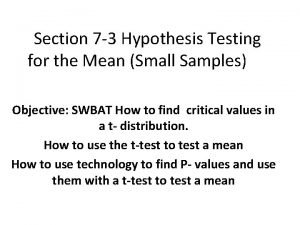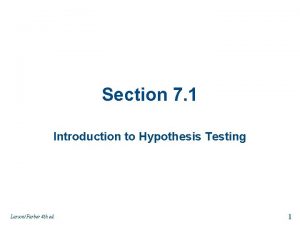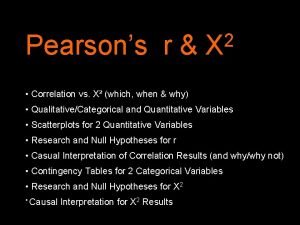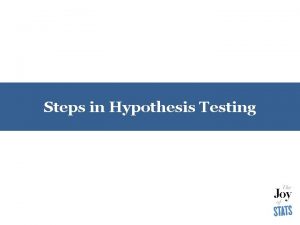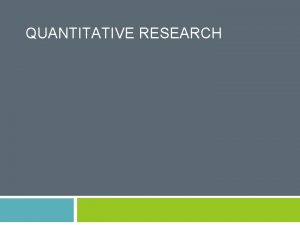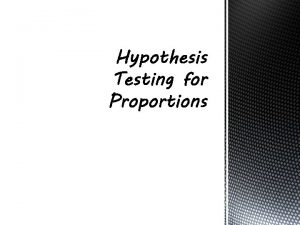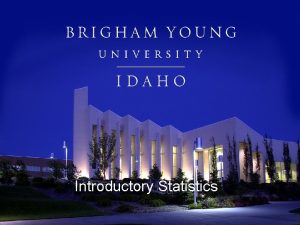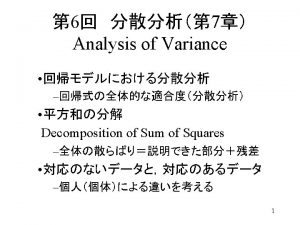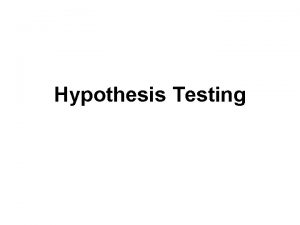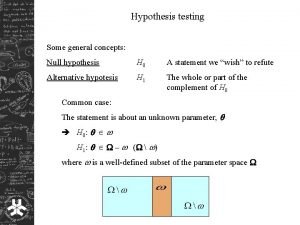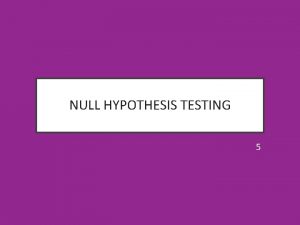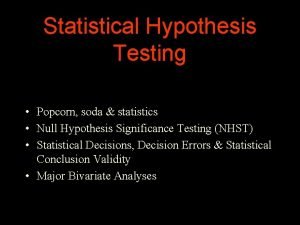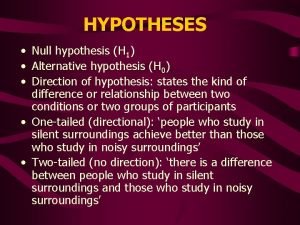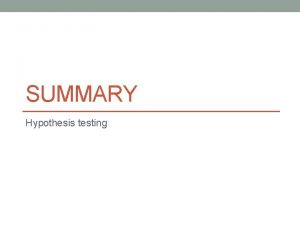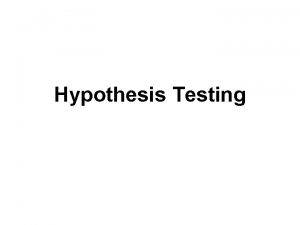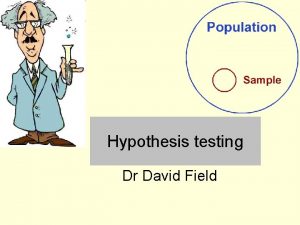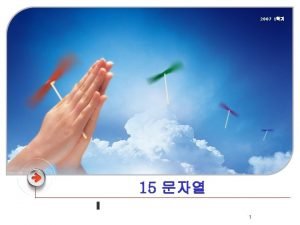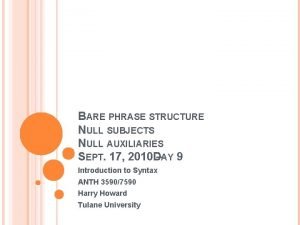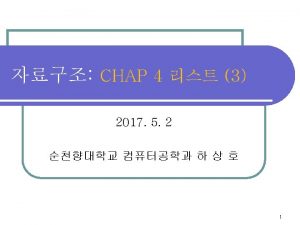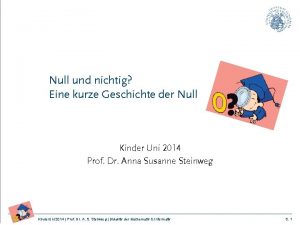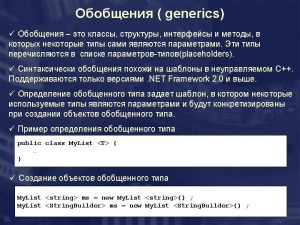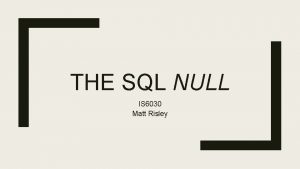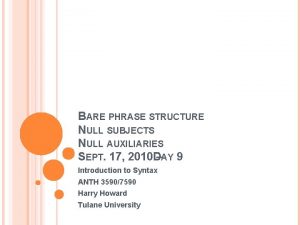Lesson 1 Hypothesis experimental and null hypothesis IV





































- Slides: 37

Lesson 1

Hypothesis (experimental and null hypothesis) IV and DV Research methods

What is an aim? General statement of what the researcher intend to investigate – essentially the purpose of the study What is a hypothesis? Testable statement setting out the relationship between two variables to be investigated Why is it important to operationalise your hypothesis? Clearly defining variables allows the researcher to know what is being measured

EXPERIMENTS Independent Variables Dependent Variables The independent variable is the thing the psychologist changes or manipulates when conducting an experiment. This is to try and discover a cause-effect relationship between the IV and the dependent variable. The name given to the variable in experimental research that measures/ observes any change in animal or human behaviours as a result of their exposure to the independent variable. As a consequence we can discover if the change or manipulation of an independent variable has caused, or had an effect on how we think, feel, or behave; this change being measured is the dependent variable

NULL HYPOTHESIS: Two hypothesis are formulated at the beginning of a study: The alternative/experimental hypothesis (H 1) Predicts that there will be a significant difference Directional or non directional (one tailed or two tailed) The null hypothesis (HO) predicts that there will not be a significant difference

The alternative/experimental hypothesis (H 1) predicts what way the results will go Also called one-tailed Non-directional hypothesis Predicts that there will be a relationship between two conditions or two groups of participants Also known as ‘two-tailed’

The null hypothesis predicts that any difference between two or more sets of data will have occurred through chance alone We focus on the null hypothesis because it eliminates bias from the research by forcing the researcher to consider the view that any difference found between the two sets of data has occurred through chance alone


A team of psychologists were interested in studying the effects of alcohol on peoples' reaction times. Earlier research suggested that an increase in reaction time was due to the alcohol rather than peoples' expectations of alcohol. The psychologists recruited two groups of volunteers (an independent groups design) from a local university. Each participant's reaction time was measured by using a computer game. The participants were then given a drink. The first group received a drink containing a large measure of strong alcohol; the second group received an identical drink without alcohol, but with a strong alcoholic smell. Finally, all participants were required to play the computer game again to assess their reaction time. Once they had completed the task, they were then thanked for their time and allowed to leave. What is the IV? whether the participants have had an alcoholic drink or one that is not alcoholic but smells as if it is What is the DV? reaction times on a computer game Null hypothesis: There will be no difference between the university students‘ reaction times on a computer game between those who have had an alcoholic drink or one that is not alcoholic but smells as if it contains alcohol; any differences are due to chance factors.

A teacher in a small secondary school wanted to find out whethere was any truth in her idea that students who used a computer regularly for their homework achieved higher exam grades than those who did not. She decided to interview a sample of 30 students taken from across the school. She tape-recorded all the interviews. She later obtained their end of year exam grades from their reports. What is the IV? whether the participants used a computer regularly for their homework or didn’t use a computer regularly for their homework. What is the DV? Exam grade achieved Null hypothesis: There will be no difference between the exam grades achieved at the end of year between those who regularly used a computer to complete homework and those who did not regularly use a computer to complete homework; any differences are due to chance factors.

Complete task 1 recapping your knowledge of… research methods

A research method in which: RESEARCH METHODS There is an independent variable (IV) manipulated by the researcher. The effects of the IV on another variable are observed or measured. This variable is called the dependent variable (DV). The participants are allocated randomly to the conditions. Experimental methods Laboratory experiment: it takes place in a laboratory (a controlled environment) and the researcher manipulates the IV Field experiment takes place in the participants natural environment and the researcher manipulates the IV Natural experiment: takes place in the participants’ natural environment the researcher does not manipulate the IV The results can be influenced by other variables: Controlled by: Extraneous variables tion Sampl a Mood c o l l A e ign y t i l r a e e erson D s Participants characteristics g n P IQ Hu e BB ndardis Ag A Situational variables r e Sta f Weath A o e ter a r e D m r i e t T ia-s Experimenter effectsoubl In B y e. B da lind Correlational studies Non-experimental methods Observations Content analysis Questionnaires Interviews You need to know examples of these and how they can be controlled

Lab Experiment s Field experiments Natural experiment s Advantages: • Strict control therefore more objectivity. • Standardisation therefore easy to replicate. Disadvantages: • Artificial conditions may produce artificial behaviour therefore lack of ecological validity • Demand characteristic and experimenter bias • Ethics: problems of deception, …. possible Advantages: • Greater ecological validity than lab experiments • If the participants are unaware of being tested less demand characteristic. Disadvantages: • Less control so more possibility of influence of confounding variables and more difficult to replicate. • Ethics: consent, deception, invasion of privacy. Advantages: • Great ecological validity • No demand characteristic, or bias due to sampling. Disadvantages: • Very difficult to replicate • Hard to infer cause and effect due to little control over extraneous variables. • Ethics: consent, deception, invasion of privacy.

OBSERVATIONS Non-participant observation An observation that is conducted by someone that is not part of the group being observed. Advantages: can be ethical but do the Ps know that they are being observed? Is it in a public place? Disadvantages: the presence of the observer can alter the group’s behaviour. Impossible to replicate. Participant observation An observation that is conducted by someone who is part of the group being observed. Advantages: high ecological validity if observer is undisclosed. Can give in-depth and detailed information. Disadvantages: difficult to record data objectively, impossible to replicate, ethical problems of consent. controlled observations: Uses tables of pre-determined categories of behaviour and systematic sampling. Two ways to structure observation: time or event sampling Naturalistic observations: record what happens. Advantages: High ecological validity, can be used as a preliminary study before a more detailed research. Disadvantages: cannot establish a cause-effect relationship as no variable is manipulated. No control over conditions so replication is impossible. Ethical problems of consent and invasion of privacy.

Questionnaires Both interviews and questionnaires can yield quantitative or qualitative data A list of standardised set of questions is given to each respondent; they give their answers in writing Closed questions Open questions Interviews Quantitative data Numerical data (in number) s v e a v i t a dat t i t an tive u Q lita qua Questions are asked orally Structured interviews has predetermined questions. Unstructured interviews: questions are developed as a response to the answers given Ways of administering: Face to face in a private/public place / En masse to a group in a public setting / Through the post / Via the internet / Over the telephone Easier to analyse. Rich in detail Can be processed using Can be analysed in more statistical tests depth Easier to compare people f o s e p y n T o i t s e u Q Qualitative data Data in words or groups More difficult to analyse BUT Lacking in detail and often superficial Open questions • Allow respondents to answer however they want • Generate qualitative data BUT Difficult to compare people or groups Closed questions, e. g. Checklist, Likert Scale, Ranking • Restrict respondent to a predetermined set of responses • Generate quantitative data

Evaluating questionnaires Strengths Large numbers of questionnaires can be administered quickly: cost-efficient and less time consuming. Easy to reach a wide range of participants from target population. Completed privately and easily made anonymous: more honest (valid) responses should be gained. Evaluating interviews Limitations Response rates are low, making it hard to generalise the results to the target population. Response bias: only certain types of people will return the questionnaire. Respondents may misunderstand the questions, leading to invalid data. Participants might be influenced by social desirability (they will give answers which make them look good). Closed questions give Time consuming to quantitative data, administer easy to analyse using The interviewer has to statistical tests. be trained Open questions gather qualitative data Open questions yield qualitative data which is rich in detail more difficult to analyse and depth and the interpretation can be biased. Participants can be influenced by social desirability.


It is based on an in-depth investigation of a single individual, group, or event to explore causation in order to find underlying principles Usually involves biographical content, behavioural information and experiences Strengths: - Rich in detail which provides depth and understanding about individuals - Participants recall real experiences - Sometimes it’s the only method available – when unique behaviours are explored or sensitive areas where other methods could be unethical - Can use case studies to contradict a theory – helps question evidence used to support a theory. Case studies we have looked at: HM KF Little Hans, Clive Wearing Can you think of any more? Weaknesses - Can not generalise so they are not representative – no 2 case studies are the same…question is whether we need to find a universal truth to behaviour though? ? ? - Most case studies will suffer with research bias – think f Little Hans and Freud - As we are asking the participant to recall experiences, we are relying on their memory. Is memory accurate? Is memory reliable?

CORRELATIONAL STUDIES A way of establishing whethere is a Writing an hypothesis for a correlation Assessing the strength of that relationship Two tailed (non-directional) hypothesis: There will be a correlation between variable 1 and variable 2 relationship between two variables unlike experiments, correlational studies do not tell you about causal relationships (we cannot say that it is because one factor varies that the other factor increases/ decreases) Measure the two variables to obtain two sets of paired scores there is no IV or DV Analyse the relationship by: Drawing a scatter graph Calculating a correlation coefficient One tailed (directional) hypothesis: There will be a positive (or negative) correlation between variable 1 and variable 2. Null hypothesis: There will not be a correlation between variable 1 and variable 2. any difference will be due to chance.

CORRELATION COEFFICIENT A statistical method for assessing the strength of a correlation The sign (+ or -) tells you the direction of the correlation The number (between -1 and 1) tells you the strength Advantages Disadvantages Can be used when an experiment would be unpractical or unethical. A cause and effect relationship between the two factors studied cannot be established because other factors might be involved If the correlation is significant then further investigation is justified To get the full marks you need to give an example and explain examples of factors which might be influential. How strong is the relationship between the two factors? Stron g Weak -1 0 perfect negative correlation No correlation Scattergraphs When one variable increases so does the other variable When one variable increases the other variable decreases Stron g +1 perfect positive correlation

Lesson 2


1) What is called when both variables increase? (1) 2) What is it called when one variable increases and the other variable decreases? (1) 3) What is the statistic called which shows the strength and direction of the correlation? (1) 4) Using the following words, estimate the strength and direction of these scores (weak, moderate, strong, perfect, positive, negative, no) (7) a) 0. 25 b) -0. 80 c) 0. 5 d) 0. 12 e) 0 f) -1 g) -0. 95 5) Give two advantages of using correlational research in Psychology (2) 6) Give two disadvantages of using correlational research in Psychology (2)

7) Define what is meant by a case study (1) 8) Identify one example of a case study used in the topic of memory (1) 9) Give two advantages of a case study (2) 10) Give two disadvantages of a case study (2)

1) What is called when both variables increase? Positive correlation 2) What is it called when one variable increases and the other variable decreases? Negative correlation 3) What is the statistic called which shows the strength and direction of the correlation? Correlation Coefficient

4) Using the following words, estimate the strength and direction of these scores (weak, moderate, strong, perfect, positive, negative, no) a) 0. 25 weak positive correlation b) -0. 80 strong negative correlation c) 0. 5 moderate positive correlation d) 0. 12 weak positive correlation e) f) g) 0 no correlation -1 perfect negative correlation -0. 95 strong negative correlation

5) Give two advantages of using correlational research in Psychology (2 marks) Can be used when research would be impossible or unethical to manipulate an IV. One can predict the value from one variable based on the value from another variable if they are correlated. 6) Give two disadvantages of using correlational research in Psychology (2 marks) Cannot and must not infer cause and effect relationships Can only detect linear (straight line) relationships.

7) Define what is meant by a case study A non-experimental research study in which one person (or small group) are studied in detail. 8) Identify one example of a case study used in the topic of memory Clive Wearing; The case of HM; 9) Give two advantages of a case study Rich in detail – provide great depth of unique cases Useful for theory contradiction 10) Give two disadvantages of a case study Not representative Risk of researcher bias



OPPORTUNITY SAMPLING When we carry out research we need people to take part, these are called participants. It is important to use suitable participants in your study. Opportunity sampling is the sampling technique most used by psychology students. It consists of taking the sample from people who are available at the time the study is carried out and fit the criteria you are looking for. The population is the group of people from whom the sample is drawn. For example if the sample Advantages: quick and convenient of participants is taken from sixth form colleges in Disadvantage: unrepresentative of the target population. Luton, the findings of the study can only be applied to that group of people and not all sixth form students in the UK and certainly not all people in the world because they are not representative (they might have different characteristics )

RANDOM SAMPLING This is a sampling technique which is defined as a sample in which every member of the population has an equal chance of being chosen. This involves identifying everyone in the target population and then selecting the number of participants you need in a way that gives everyone in the population an equal chance of being picked. Advantage: best chance of an unbiased representative sample of the target population. Disadvantage: Difficult to do when the target population is large. SELF SELECTED/VOLUNTEER SAMPLING STATIFIED SAMPLING Stratified sampling involves classifying the population into categories and then choosing a sample which consists of participants from each category in the same proportions as they are in the population. Advantage: more representative of the wider population than opportunity sample as all categories of the target population are represented. Disadvantages: difficult and time consuming. Self selected sampling (or volunteer sampling) consists of participants becoming part of a study because they volunteer when asked or in response to an advert. Advantages: convenient, no bias from the experimenter in the choice of participants. Disadvantages: often unrepresentative, biased on the part of the participants- volunteers might be different from non-volunteers.

Q 1 A sample is a part of the whole group of people being studied TRUE FALSE Q 2 A random sample is one where anybody who is available at the time are asked at random to be in the study TRUE FALSE Q 3 A volunteer sample will always be biased because volunteers are likely to be very interested in the topic being studied and/or have a specific personality type (the volunteering type) that make them atypical of people in general TRUE FALSE Q 4 Opportunity samples are often used in psychological research because they are cost and time effective and because other sample types are difficult to obtain TRUE FALSE Q 5 A strength of a random sample is that it is assumed that chance selection will cancel out biases and provide a sample representative of the target population TRUE FALSE Q 6 “The target population” is the same as “people in general” TRUE FALSE Q 7 Student samples are ideal for psychological research, especially when psychology students are used, as they take the study seriously and are convenient for researchers based in universities TRUE FALSE Stretch! For any that you believe to be false – correct the statements so that they are actually true!

Q 1 A sample is a part of the whole group of people being studied TRUE FALSE Q 2 A random sample is one where anybody who is available at the time are asked at random to be in the study TRUE FALSE Q 3 A volunteer sample will always be biased because volunteers are likely to be very interested in the topic being studied and/or have a specific personality type (the volunteering type) that make them atypical of people in general TRUE FALSE Q 4 Opportunity samples are often used in psychological research because they are cost and time effective and because other sample types are difficult to obtain TRUE FALSE Q 5 A strength of a random sample is that it is assumed that chance selection will cancel out biases and provide a sample representative of the target population TRUE FALSE Q 6 “The target population” is the same as “people in general” TRUE FALSE Q 7 Student samples are ideal for psychological research, especially when psychology students are used, as they take the study seriously and are convenient for researchers based in universities TRUE FALSE Stretch! For any that you believe to be false – correct the statements so that they are actually true!

Repeated measures design EXPERIMENTAL DESIGN Participants take part in both conditions of the experiment (1 group) There are 3 different ways to carry out the experiment with participants. These are known as Experimental Designs. Advantages: Avoids the problem of participant variables. Fewer people are needed. Disadvantages: Order effects are more likely to occur. Demand characteristic more likely as participants might guess the aim as they take part in all the conditions. Independent measures design Participants only take part in one condition of the experiment (2 separate groups) Advantages: Avoids order effects. If a person is involved in several tests they man become bored or tired. Less demand characteristic as they do only one condition. Disadvantages: More people are needed than with the repeated measures design. Differences between participants in the groups may affect results, for example; variations in age, sex or social background. These differences are known as participant variables. Counterbalancing: Alternating the order in which participants perform in different conditions of an experiment. For example, group 1 does ‘A’ then ‘B’, group 2 does ‘B’ then ‘A’ this is to eliminate order effects. Matched pairs design Participants are matched in each condition for characteristics that may have an effect on their performance. e. g. A memory test Advantages: Reduces participant variables. Avoids order effects. Disadvantages: Very time-consuming trying to find closely matched pairs. Impossible to match people exactly. Requires more participants.

For those of you that would like to read ahead…. Pilot studies Ethical issues Peer review How we create….

Lesson 3
 Alternative hypothesis
Alternative hypothesis Null hypothesis example
Null hypothesis example Alternative hypothesis
Alternative hypothesis Correlation hypothesis
Correlation hypothesis Experimental vs non experimental
Experimental vs non experimental Descriptive studies
Descriptive studies Disadvantages of experimental research
Disadvantages of experimental research Experimental vs nonexperimental
Experimental vs nonexperimental Nonexperimental study
Nonexperimental study One way anova null hypothesis
One way anova null hypothesis Critical value of 0.001
Critical value of 0.001 What's a null hypothesis in psychology
What's a null hypothesis in psychology One-way anova hypothesis testing
One-way anova hypothesis testing Standard deviation null hypothesis
Standard deviation null hypothesis Hypothesis testing notation
Hypothesis testing notation Hypothesis test assumptions
Hypothesis test assumptions Is hypothesis an educated guess
Is hypothesis an educated guess Alternative hypothesis
Alternative hypothesis Critical value chi square
Critical value chi square Effect size for t-test
Effect size for t-test Null hypothesis examples
Null hypothesis examples P-value two tailed test
P-value two tailed test What's a null hypothesis in psychology
What's a null hypothesis in psychology Test hypothesis formula
Test hypothesis formula Chi square ap biology
Chi square ap biology Mann whitney null hypothesis
Mann whitney null hypothesis North dakota null hypothesis brain inventory
North dakota null hypothesis brain inventory Central limit theorem standard error
Central limit theorem standard error Define null hypothesis
Define null hypothesis One-way anova hypothesis testing
One-way anova hypothesis testing Linear regression hypothesis
Linear regression hypothesis Contoh hipotesis statistik ho dan ha
Contoh hipotesis statistik ho dan ha Null hypothesis example
Null hypothesis example Null hypothesis
Null hypothesis T-test for correlation coefficient
T-test for correlation coefficient Hypothesis testing
Hypothesis testing Null hypothesis example
Null hypothesis example Null hypothesis for correlation
Null hypothesis for correlation



